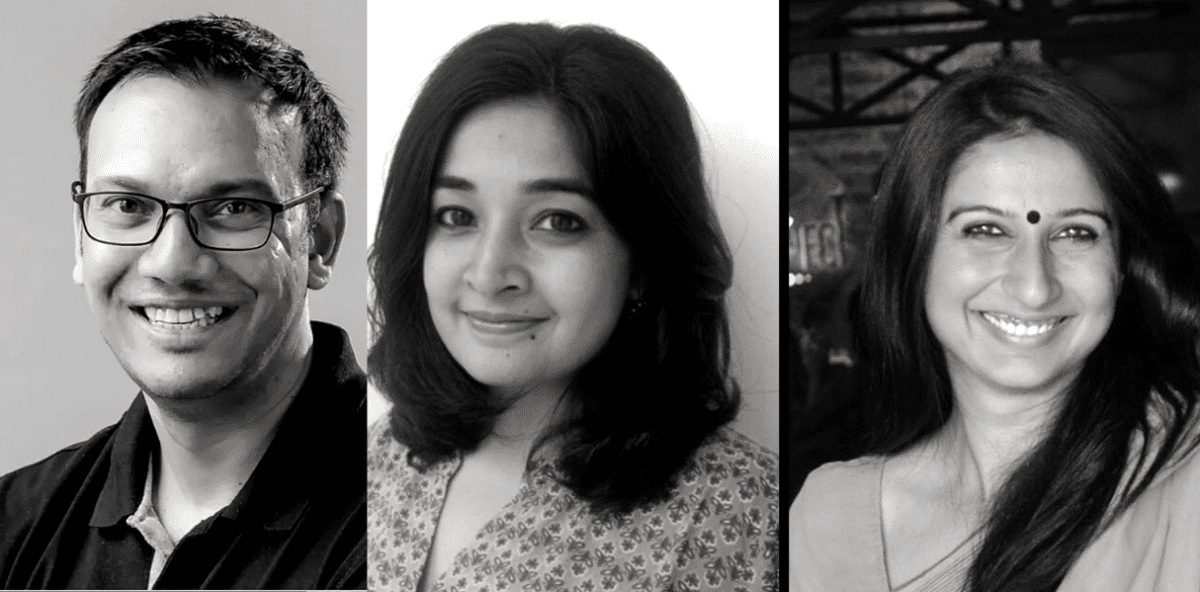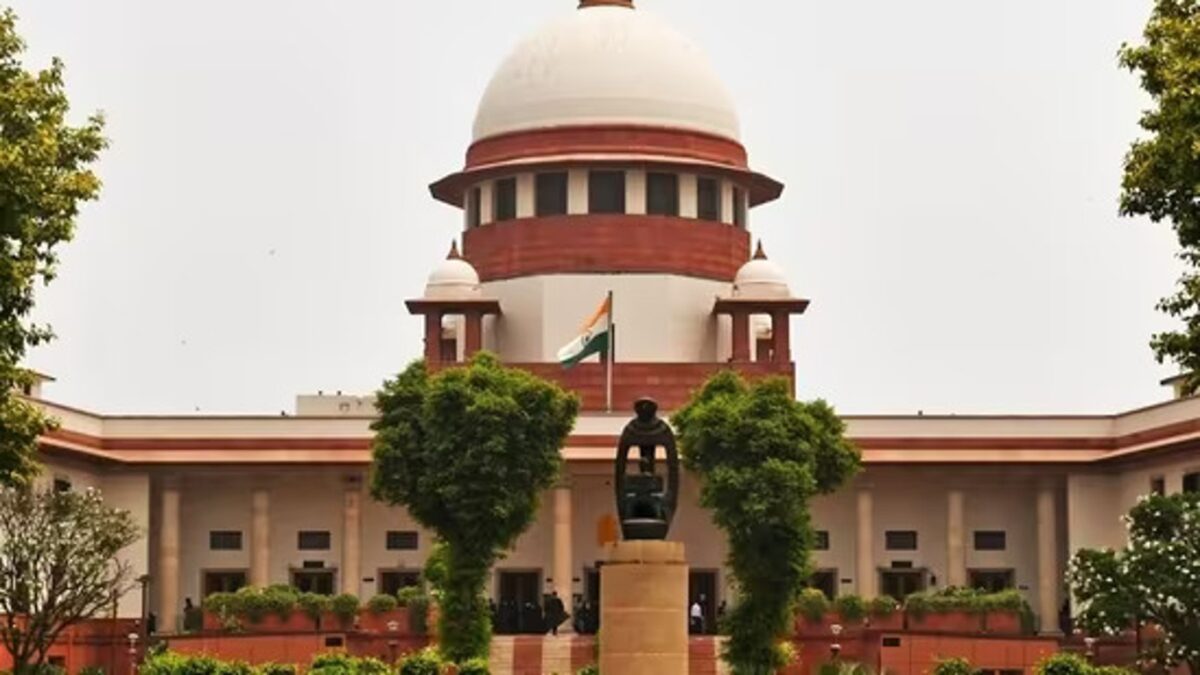Value Fit Should Be An Explicit Goal For D&I, Says Rahul Gonsalves, Obvious.in

Written By: Ugender Blog Team
Rahul Gonsalves is the founder & CEO of Obvious.in. Called “one of the faces of New India” by Forbes, Rahul started his career in design creating websites and then moved on to designing mobile apps for major internet companies such as Flipkart and Myntra. He strongly believes that designing the right kind of org is an essential prerequisite to designing the right kinds of products. His keen interest in equity and social justice drove him to participate in multi-year, multi-stakeholder efforts to draft the landmark National Policy on Universal Electronic Accessibility, which was passed by the Government of India in 2013, mandating that all Information and Communication Technology (websites etc) be accessible to people with disabilities.
Monica Pillai, heads People Operations at Obvious. Her work over a 20-year period has spanned creating and leading people functions for organisations, designing and facilitating life skills workshops, coaching, and writing. The thread running through her work is her focus on the well-being of the individuals within organisations. She has transitioned from people development roles in corporate houses such as Accenture, LG Soft India, 24/7ai (then 247Customer), to start-ups and small-sized organisations such as The Fuller Life, Crankmeister Bicycle Works, Udhyam Learning Foundation, Navgati etc., where she finds synergy in working with entrepreneurs in experimenting and cementing people and growth strategies.
In conversation with Ungender Legal Advisory’s CEO and Founder, Pallavi Pareek, Rahul Gonsalves and Monica Pillai talk about what it takes to create a really diverse team, from the ground up.
How The Team Evolved
Pallavi: Usually on a team page, we see that it starts with founders and CEOs and CTOs and CEOs, the hierarchy flows down the page. Yours isn’t quite like that and it was such a beautiful thing to see…it creates an immediate impact for any team browsing it. How did all this happen?
Rahul: We didn’t start out like this at all. The three of us who started Obvious.in, are the opposite of diverse… three men, in the same age group, with similar likes. We have now been together for about nine years. For the first few years we accumulated people who looked very similar to us…. we all ended up hanging out and sharing the same interests and not having the same responsibilities, etc, etc. While that happened, we continued to build the team.
It was only a few months ago that we noticed what you’re mentioning. I think Monica pointed it out, there are more women on the team now. It was always, one of our explicit goals. As long as that aspiration, that intent is there, we can tell our partner companies that we measure diversity.
Pallavi: Monica, how has the culture of the organisation evolved?
Monica: When I joined ten months ago, one of the first things that I got involved with was hiring. The thing that I heard was, “let’s look at as much diversity as we can in the next set of people that are coming in”.
I was told, it’s fine if we have to wait to get the right set of people in but we are putting up a set of open positions for folks who are not so far represented. There are spaces where we can go and look for folks from the LGBTQ community… so we did that.
Pallavi: There is usually a business mandate, like compliance, that is governs how fast these processes such as diversity, should finish. How do you prioritise diversity?
Monica: I checked in with the leadership and they said, we will wait for the right set of people. Most of Indian leadership waits for data- driven proof for diversity as a success strategy, despite there being lots of global evidence for this.
Pallavi: This is a question to both of you, Rahul and Monica. Does the internal team and well-being matter? Or is this something that is purely driven out of compliance. How are decisions taken?
Rahul:Well, I think it’s a number of different factors.
One is a genuine belief that we will not be able to do the best work that we can, if we don’t have a team that is able to bring in diversity of thought and lived experiences.
Monica: If you know India, you know, a certain set of people come from a certain socio economic background. Your lived experience is very disconnected from a huge portion of this country. When you’re building a product that you know will go out to what we call ‘country scale’, this is millions of people in many cases.
While I may not be able to quantify it and say, ‘we are going to be less successful as a business by 18% because we don’t have this particular kind of representation’…I think there’s a certain intuition. I acknowledge, we have to be able to say, this is priority and intent matters.
I’ve heard from people who joined the team remotely, after the pandemic started, I’ve noticed that everybody in the organisation tends to speak from a space of their own experience.
So they put in context, whatever they’re talking about, I’ve never heard anybody talk about anything in terms of absolutes or universal sort of realities. So, everybody’s very aware “I might be saying this with great conviction, but I’m aware of the fact that this is my experience.” This got me thinking. I think that’s one of the things that comes out of that intent being internalised.
Rahul: Well, I don’t think we’ve had any hard numbers necessarily. But I think we definitely have a sense that we can be representative of the world in which we exist. From intent, now it does need to manifest into other aspects of the organisation, it has to become some form of document or policy, it has to become part of key process.
It’s been a journey for us. It’s been a sort of a transition over time. It did not happen overnight. Cant’t pinpoint a particular moment. It was a convergence of values and beliefs that we had about how the world should exist.
The Building Blocks of Diversity
Pallavi: Monica what have the building blocks been?
Monica: The fundamental building block that I inherited as I came in was the fact that there were a bunch of people who are very aligned on some of these things.
One of the starting points has to be safety. How do you make sure that at the very base we have safety, basic physiological safety for everybody involved? It’s really surprising, how many organisations don’t have these very basic institutional policies in place. Like you have to have a POSH policy at the very least.
Pallavi: But how do you make sure that you get people who know what they’re talking about? Who know how to structure these in ways that are nuanced and sensitive?
Rahul: I’ll share this with you. First, I didn’t fully understand the ramifications of the entire POSH Policy. I said, “okay, I’m anti sexual harassment, so I should be on the committee?”. Then our consultant came and sat me down and said, ‘I don’t think it is a great idea for you to be on the committee, because… you as the head of the organisation will bias it. It needs to be an impartial committee that is not influenced by you’. This was my tiny learning moment, and there are many, but I think they add up over time.
We were lucky, partly by design, partly by accident, to get extremely feminist consultants in the most odd places. The person who handled all our legal work, acting as our general counsel was a fantastic lawyer who ensured that all the policies that we drafted, were also extremely thoughtful and looking at where we wanted to be.
I think culture fit is a bit of a dangerous thing to do. But if you look for value fit, which is something that we actively search for, that makes sense. That everyone doing the same work, gets paid the same so financial inclusion. We have that as an explicit sort of goal.
Pallavi: What do you do around retention?
Monica: One of the things we do is to give people a sense of really long periods of time, like 10 years. I talk about it with absolute new hires and say that, okay, you’ve been around for two months. Now, what would the next 10 years look like? What that does for people is, gives people a sense, maybe they haven’t thought about it yet because it is a new job…
One of the other things we do is, realise needs. If somebody who has a disability. needs the doors to be a little different so that they’re able to open it without fail, we figure out very quickly how to make that happen.
Somebody says, “here are challenges that I’m dealing with..”, we always look at it from from the perspective of does this warrant a change in how we function? This gives people a sense of ‘I truly belong here’.
The idea of somebody being a diversity hire in itself is very problematic. We are not going vegetable shopping. The way to look at this is that we’re trying to build a team. Ramps aren’t only for PWDs, the day you sprain your ankle is the day that you become really thankful for that ramp. The day you’re carrying 10 heavy bags or pushing a pram, is the day again that you’re thankful for that ramp.
Retention is, when you start looking at it as ‘everybody is going to experience different things in life’, how can you make your policies inclusive for all of these different life stages? I think that’s when you have retention policies that work for everybody.
Pallavi: Costs plays a huge role here. There are obvious costs and then there are hidden costs. Has it ever been a concern?
Monica: When we design let’s say, for a simple thing like ramps or doors… there are obvious costs which you can directly calculate. Later comes the uncalculated cost.
If you put these costs in at the time of building, it’s very different from retro-fitting. Retro-fitting diversity onto a team is much harder than building diverse teams from the ground up. So why not build from the ground up in a more inclusive way? If you’re hiring, if you’re hiring people from scratch all the time, versus if you create an organisation where you retain people, I think the cost of making sure that the workplace is someplace where people do not want to leave, has to be included.
I think that the costs balance out. There’s a hidden cost of getting people in, who need to then be on-boarded on to the kind of belief systems that you hold true.
The wall has to be very high… a person has to really think if he really wants to jump and then you keep building it higher for a person not to be able to leave the organisation. You’re not doing that by limiting that person. The person is growing…, has obviously evolved by staying in the team. Something more than the obvious needs to be said to them.
Inclusion Benefits Everyone
Pallavi: You just gave us the Tick Tock example. Tick Tock was able to bring diversity. Regional, gender, the LGBTQ community. Its popularity did not come from you or me. It has diversity built in and it made inclusion a competitive advantage.
Rahul:That truly is the case. Because it increases your chances, not just of anything, and it could be in any industry… from clothing to fashion to food to, you know, everything, that’s something that is still missing out in the larger boardroom conversations.
Pallavi: A ten-year promise needs long-periods of hard work. If you were to talk about five quick things that need to be put together, what would you suggest those five things to be?
Monica: Think of nudges that you can give yourselves or your teams.
We say that don’t tell us about your education background or where you worked. We just need to understand what you do and we’ll evaluate that. So think about how can you gain more control of your own hiring process. Don’t worry so much about gender and how many children have they had. Ask how far have they had to come from? Ask if they will be available in the evenings?
Don’t ask what language do you speak at home? That’s not relevant to the work that you need to do with them. What are the things that we can do to make sure that the person feels included? Not because they’re from the same state or region or language, but because we believe that they’re a good fit for the shoe.
Watch the full video on Ungender’s YouTube channel here.
Video Highlights
- 02:42: On How The Team Evolved
- 09:08: On Prioritising Diversity Goals
- 15: 52: On The Importance Of Leadership Intent
- 19: 46: On Measuring Diversity
- 29:38: On the Building Blocks Of Diversity
- 51:08: On Inclusion Benefitting Everyone
Also #MustRead:
D&I Results In High Return On Investment, Says Shiben Moitra, Senior HR Director, IQVIA
Yashmi Pujara: Diversity In Action Is Inclusion
Ungender Insights is the product of our learning from advisory work at Ungender. Our team specializes in advising workplaces on workplace diversity and inclusion. Write to us at contact@ungender.in to understand how we can partner with your organization to build a more inclusive workplace.
Read our insights about diversity, legal updates and industry knowledge on workplace inclusion at Ungender Insights. Visit our Blog.
Sign up to stay up-to-date with our free e-mail newsletter.
The above insights are a product of our learning from our advisory work at Ungender. Our Team specialises in advising workplaces on gender centric laws.
or email us at contact@ungender.in




